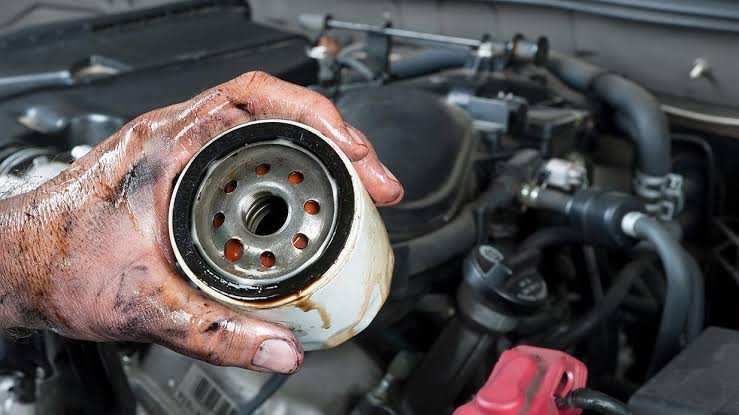"Burnt fingers teach best." This old mechanic's adage rings especially true when you're rushing an oil change on a hot engine.
The timing of your oil change after shutting down your vehicle isn't just about convenience, it's about safety and effectiveness.
The debate over hot versus cold oil changes has persisted in garages worldwide for decades. While manufacturers rarely specify exact cooling periods in their manuals, professional experience offers valuable guidance. Let's settle this question once and for all.
The Sweet Spot
Based on extensive research and professional experience, the optimal waiting time before changing your oil falls between 15 and 30 minutes after engine shutdown. This timing strikes the perfect balance between safety and effectiveness.
Why this window? When you first shut off your engine, the oil temperature typically hovers around 200-220°F, hot enough to cause serious burns. After about 15 minutes, the temperature drops to approximately 100 - 130°F, which allows the oil to remain fluid enough to drain effectively while significantly reducing burn risks.
Automotive technician Steve Sina from Diesel Army confirms: “It is generally recommended to change engine fluids when they are warm. Warm fluids flow more easily, allowing for better drainage and removal of contaminants.”
The Science Behind Oil Change Timing
The viscosity of motor oil changes dramatically with temperature. Consider these factors:
- Too hot (0 - 10 minutes after shutdown): Oil flows extremely well but poses serious burn hazards. Metal components like the oil pan and drain plug remain dangerously hot.
- Ideal Range (15 - 30 minutes after shutdown): Oil remains sufficiently warm to flow freely while carrying suspended contaminants, but cool enough to handle safely.
- Too cold (Hours after shutdown): Oil thickens considerably, flows slowly, and may leave behind contaminants. Cold oil takes up to four times longer to drain completely.
A study comparing hot versus cold oil changes found that warm oil extracted approximately 15% more contaminants than cold oil during draining, demonstrating the efficiency advantage of the warm-but-not-hot approach.
Safety First
"I've seen more mechanics burned by hot oil than almost any other shop hazard," says Tom Magliozzi of Car Talk. “The oil itself isn't the only danger, exhaust components and engine parts near the oil drain can cause serious burns too.”
- When changing oil, follow these safety precautions:
- Allow the engine to cool for at least 15 minutes
- Use heavy - duty nitrile or mechanic's gloves
- Position your body away from potential oil splash paths
- Have absorbent materials ready for spills
- Use proper tools to avoid slippage when removing the drain plug
The Drain Time Factor
Another overlooked aspect is drain time. NAPA auto experts recommend: “Allow the oil to drain for a full 5 minutes to ensure maximum contaminant removal. Many DIYers rush this step, leaving up to 15% of dirty oil in the system.”
This patience pays dividends in engine protection. Even with the right oil and filter, incomplete drainage undermines the entire oil change process.
Special Circumstances
Certain situations require modified approaches:
- Very cold weather: In sub-freezing temperatures, consider running the engine for 3 - 5 minutes before shutting down and waiting 10 - 15 minutes. This warms the oil enough to flow properly without extended idling.
- Track day or heavy use: After intense driving, engines run hotter than normal. Allow 30 - 45 minutes cooling time to prevent burn hazards.
- Older vehicles: Cars with high mileage often have more sludge buildup. A slightly warmer oil change (15 minutes after shutdown) helps remove these deposits more effectively.
Professional Techniques
Professional shops use specialized equipment that mitigates many timing concerns. Quick - lube facilities employ pit systems where technicians work beneath vehicles, reducing burn risks. Many also use vacuum extraction systems that can remove oil regardless of temperature.
"We typically wait about 5 - 10 minutes after a customer brings in a hot car," explains Fischer, a veteran mechanic. "Our specialized equipment and protective gear allow us to work safely with warmer oil, but we still respect the heat."
The Bottom Line
The 15 - 30 minute cooling period represents the ideal compromise between safety and effectiveness for most DIY oil changes. This timing allows the oil to remain fluid enough to flow well while reducing burn risks to acceptable levels.
Remember that while timing matters, using the correct oil type, proper filter, and adequate drain time contribute equally to a successful oil change. Your engine and your fingers will thank you for your patience.
"People always say 'I know my car' when they push maintenance boundaries," notes a veteran technician. “But your engine doesn't know you, it only knows physics and chemistry. Respect the heat, respect the process.”
Now that you understand the timing, your next oil change will be both safer and more effective. Those 15 - 30 minutes might feel like a wait, but they're an investment in both your safety and your engine's longevity.

Comments (0)
Please login to join the discussion
Be the first to comment on this article!
Share your thoughts and start the discussion